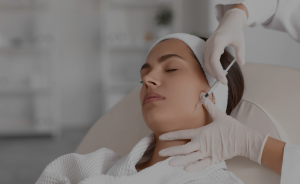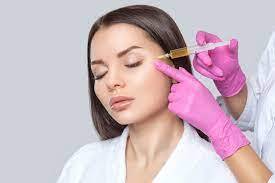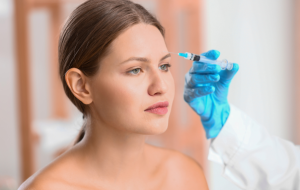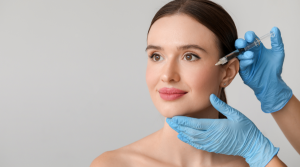Are you considering a Botox treatment for your forehead wrinkles but don’t know how much Botox you will need? The number of units required can vary based on several factors that affect the effectiveness of the treatment. It is essential to understand the appropriate dosage to achieve optimal results.
In this section, we will explore the factors that determine the number of units of Botox needed for a forehead treatment. By understanding the mechanism behind the treatment and the terminology used to describe units and dosage, you can make informed decisions regarding your forehead treatment.
Key Takeaways
- Understanding the appropriate dosage for Botox treatment is crucial for optimal results.
- The number of units required for forehead treatment varies based on several factors.
- Factors such as muscle strength, desired results, and expert recommendations should be taken into account.
- Consultation with a qualified professional is essential before undergoing any Botox treatment.
- Achieving optimal results with Botox for the forehead requires careful consideration of various factors.

Botox for Forehead Wrinkles: How It Works
Botox is a popular and effective treatment for reducing forehead wrinkles, which often occur due to frequent muscle movements such as frowning or raising eyebrows. Botox works by temporarily paralyzing the muscles responsible for creating these wrinkles, resulting in a smoother and more youthful appearance.
The active ingredient in Botox is botulinum toxin type A, which is a naturally occurring protein that is derived from the bacteria Clostridium botulinum. When injected into the targeted muscles, Botox blocks the nerve signals that cause muscle contractions, relaxing the muscles and reducing the appearance of wrinkles.
The effects of Botox typically last for three to six months, after which the treatment can be repeated to maintain the desired results. With regular use, Botox can even prevent the development of new wrinkles.
The Procedure
The Botox injection procedure is relatively simple and typically takes only a few minutes to complete. Before the injections are administered, the treatment area is cleaned and a topical anesthetic may be applied to minimize any discomfort. The Botox is then injected into the targeted muscles using a fine needle. Most patients experience only minimal discomfort during the procedure.
After the injections, it is recommended that patients avoid lying down or performing any strenuous physical activity for at least four hours to prevent the Botox from spreading to unintended areas. It is also important to avoid rubbing or massaging the treated area for the same reason.
Side Effects
Like any medical procedure, Botox injections do carry the risk of side effects. However, these side effects are typically mild and temporary, and may include redness, swelling, bruising, or soreness at the injection site. In rare cases, more serious side effects such as difficulty breathing, muscle weakness, or vision changes may occur. It is important to discuss any concerns or questions with your healthcare provider before undergoing treatment.
Overall, Botox is a safe and effective treatment for reducing forehead wrinkles and achieving a more youthful appearance. By understanding how Botox works, as well as the risks and benefits associated with the treatment, you can make an informed decision regarding your forehead rejuvenation needs.
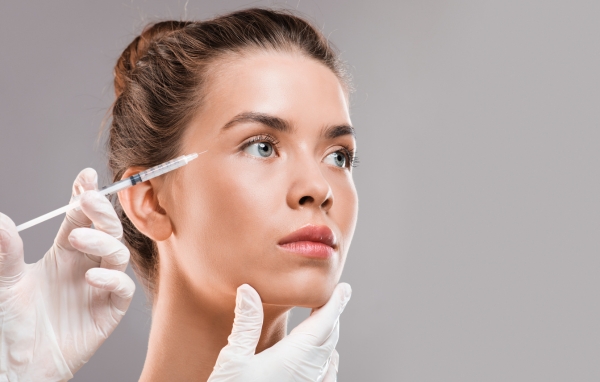
Botox: Units and Dosage Explained
When it comes to receiving Botox injections, the number of units and dosage required for optimal results can vary depending on various factors. Understanding the terminology is crucial for making informed decisions regarding your forehead treatment.
Botox Units for Forehead:
The number of Botox units required for the forehead can range from 10 to 30 units depending on several factors. The dosage is mainly determined by muscle size and strength. For example, a person with stronger muscles will require more Botox units.
Botox Dosage for Forehead:
The dosage of Botox for the forehead can vary from 10 to 30 units, depending on various factors. The dosage is mainly determined by muscle size and strength. For example, a person with stronger muscles will require more Botox units.
Units vs. Dosage:
It is important to note that Botox units and dosage are not interchangeable terms. Botox units refer to the amount of Botox present in a vial, whereas dosage refers to the amount of Botox injected into a specific area.
Injection Technique:
The injection technique also plays a crucial role in determining the appropriate dosage for forehead treatment. One technique that is commonly used is the “dilution technique” where the Botox powder is mixed with saline solution to create the desired dosage for injection.
Botox for Other Areas:
The number of units and dosage required for Botox treatment can vary depending on the area being treated. For example, the dosage required for treating frown lines may differ from the dosage required for treating crow’s feet.

Factors Affecting Botox Dosage for the Forehead
Several factors must be considered when determining the appropriate Botox dosage for a forehead treatment. One of the primary factors is the strength of the muscle responsible for the wrinkles. The stronger the muscle, the more units of Botox will be required to achieve the desired results.
The number of wrinkles and their severity also play a significant role. Individuals with more pronounced wrinkles may require a higher dosage of Botox to achieve optimal results.
The desired outcome is another essential factor. Some individuals prefer a more natural look, with some movement still present in the forehead. Others may want a more dramatic result, with a completely smooth forehead. The dosage will vary accordingly.
The patient’s age and skin condition are also considered. Older patients may require a higher dosage of Botox due to decreased skin elasticity. Similarly, individuals with more damaged skin may require a higher dosage to achieve the desired results.
Finally, the experience and expertise of the injector are critical in determining the appropriate dosage. A qualified professional will take all of these factors into account when designing a personalized treatment plan.
Botox Dosage for Forehead Wrinkles Table
| Severity of Wrinkles | Number of Units Required |
|---|---|
| Mild | 10-20 units |
| Moderate | 21-30 units |
| Severe | 31-40 units |
Expert tip: It is essential to seek treatment from a qualified professional with experience in administering Botox for the forehead. This will ensure that the appropriate dosage is determined based on individual factors and desired outcomes.
By considering these factors, individuals can work with a qualified professional to determine the appropriate dosage of Botox for their forehead treatment. The result will be a natural-looking reduction in wrinkles and a smoother, rejuvenated appearance.

Average Units of Botox for Forehead
While every individual is unique and requires a personalized dosage, there is an average number of Botox units typically used for forehead treatment. On average, 10 to 20 units of Botox are used for forehead wrinkles and lines. However, keep in mind that this number can vary based on factors such as muscle strength and the desired results.
It is essential to remember that the injection site and the dosage are both critical factors that determine the overall success of the treatment. Therefore, consulting with a qualified professional is vital to determine the appropriate dosages for your specific needs.
Determining Dosage for Forehead Lines
When it comes to determining the appropriate dosage of Botox for forehead lines, several factors need to be considered. The severity of the lines, muscle activity, and the patient’s desired results are some of the key factors to consider.
Typically, the dosage needed to treat forehead lines ranges from 10 to 30 units of Botox. However, this can vary based on individual needs and goals.
During the consultation and assessment with a qualified professional, they will examine your forehead muscles and discuss your desired outcome. Based on this information, they will provide personalized recommendations on the appropriate dosage.
It’s worth noting that over-treatment can result in the “frozen” or “plastic” look, which can be unnatural and unappealing. On the other hand, under-treatment may not provide the desired results. Therefore, it’s essential to seek the advice of a qualified professional to ensure the optimal dosage is achieved.
“It’s essential to seek the advice of a qualified professional to ensure the optimal dosage is achieved.”
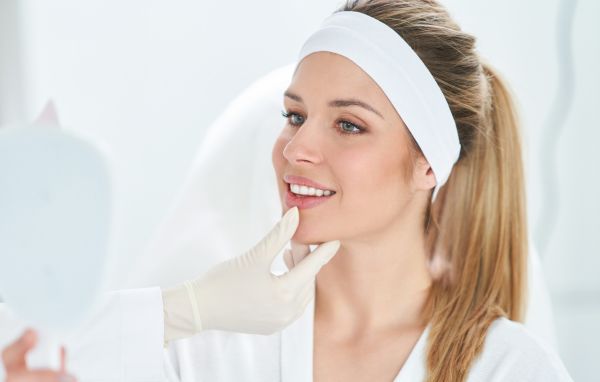
Botox Units for Frown Lines
When considering a forehead Botox treatment, it is essential to consider frown lines as well. These lines often accompany forehead wrinkles and can contribute to an aged or tired appearance. Thankfully, Botox can effectively reduce the appearance of frown lines as well.
The number of Botox units needed for frown lines will depend on the severity of the lines and the desired results. The average number of units for frown lines ranges from 20-30, with some patients requiring up to 40 units.
It is important to note that the dosage for frown lines will vary depending on the location of the lines. The dosage for vertical frown lines between the eyebrows will differ from that of horizontal forehead lines.
During your consultation and assessment, your qualified professional will determine the appropriate dosage for your frown lines based on your unique needs and desired outcomes.
The Importance of Consultation and Assessment
Before undergoing any botox injections for forehead, it is crucial to schedule a consultation and assessment with a qualified professional. This step is essential in determining the appropriate dosage and achieving the desired results.
During the consultation, the practitioner will evaluate your facial muscles and the lines on your forehead to assess the severity of the wrinkles. It is important to communicate your desired outcome and expectations during the consultation to ensure they align with what can realistically be achieved through the treatment.
The assessment will also take into account your medical history and any medications you are taking to ensure that Botox injections are safe for you. It is crucial to be honest about your medical history to avoid any complications or risks associated with the treatment.
Additionally, the consultation and assessment provide an opportunity to ask any questions or express any concerns you may have about the procedure. The practitioner can address your concerns and provide further information to ensure you are fully informed before proceeding with the treatment.
A qualified practitioner will take the time to explain the procedure, including the dosage and number of units required for your individual needs. They will also discuss any potential side effects and risks associated with the treatment.
Remember that the expertise and experience of the practitioner are crucial for the success of the treatment. Therefore, it is essential to choose a qualified and reputable professional who is well-trained in administering Botox injections for the forehead.

Expert Recommendations for Forehead Botox Dosage
When it comes to determining the appropriate dosage for Botox injections in the forehead, there are several expert recommendations to consider. The most important factor is the patient’s individual needs and desired results. However, there are general guidelines that can help guide the dosage decision.
Expert Opinion
According to Dr. Richard Buckley, Medical Director at MilfordMD Cosmetic Dermatology Surgery & Laser Center, the typical dosage for Botox in the forehead ranges from 10-30 units. However, he cautions that personalized dosage is the key to success.
“Dosage can vary, as everyone’s muscles are different and have different strengths. Some people may need more units to achieve desired results compared to others.”
In addition, Dr. Jennifer Pearlman, Medical Director of PearlMD Rejuvenation, recommends a conservative approach to dosing to prevent over-treatment.
“A natural, refreshed look is the goal, and avoiding an overdone look is key. I prefer to take a lower-dose, natural approach, gradually adding more units in subsequent treatments, if needed.”
Personalized Consultation
Ultimately, the most important factor in determining the appropriate dosage for Botox in the forehead is a personalized consultation with a qualified professional. A thorough assessment of the patient’s muscle strength, desired results, and overall facial structure is necessary to create a customized treatment plan.
The consultation should also include a discussion of potential risks and side effects. While Botox is generally safe, there is a slight risk of complications such as bruising and drooping eyelids. Patients should be fully informed of these risks before proceeding with treatment.
In Conclusion
Consulting with a qualified professional is essential for determining the appropriate dosage of Botox for the forehead. While expert recommendations can provide general guidelines, personalized treatment is the key to achieving optimal results. With the right dosage and a conservative approach, patients can achieve a natural, refreshed look with Botox for forehead wrinkles.
Achieving Optimal Results with Botox for Forehead
When considering Botox for the forehead, achieving the best possible results is a top priority. By following these tips and recommendations, you can achieve optimal outcomes with your treatment:
- Consult with a qualified professional: Before undergoing any Botox treatment, it is crucial to have a consultation and assessment with a qualified professional. They can provide personalized advice tailored to your specific needs.
- Be realistic about your expectations: While Botox is highly effective in reducing forehead wrinkles, it’s important to have realistic expectations about the results. Discussing your goals with your provider can help set realistic expectations and avoid disappointment.
- Understand the recommended units: Understanding the average units of Botox used for a forehead treatment can help you make informed decisions. In general, the average range is 10-30 units, but individual needs may vary.
- Consider a follow-up appointment: Sometimes, additional units of Botox may be needed to achieve desired results. Consider scheduling a follow-up appointment to assess the effectiveness of the initial treatment and make any necessary adjustments.
- Maintain a healthy lifestyle: While Botox can effectively reduce forehead wrinkles, maintaining a healthy lifestyle can also contribute to optimal results. Staying hydrated, eating a healthy diet and getting plenty of sleep can help keep your skin looking youthful and vibrant.
By following these tips and recommendations, you can achieve the best possible results with Botox for the forehead. Remember, always consult with a qualified professional for personalized advice tailored to your specific needs.
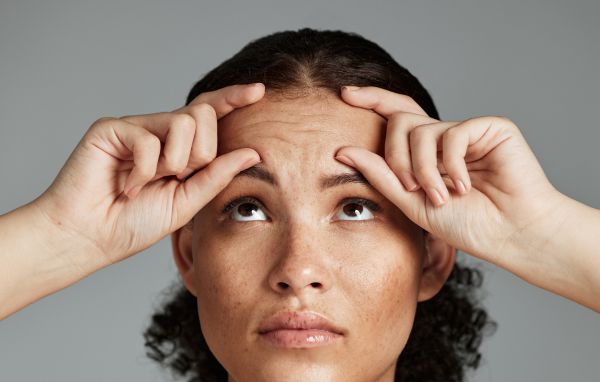
Potential Side Effects and Risks
Before opting for Botox injections for forehead treatment, it is essential to consider the potential side effects and risks involved. While Botox is a relatively safe and FDA-approved treatment, it can have adverse effects on some individuals.
Immediate side effects associated with Botox injections include mild swelling, redness, and bruising at the injection site. Patients may also experience headaches and flu-like symptoms following treatment. However, these side effects are usually mild and resolve within a few days.
Some patients may experience more severe side effects, such as drooping eyelids or uneven eyebrows. These side effects usually occur due to incorrect dosage or injection technique. To avoid these complications, it is crucial to seek treatment from a qualified and experienced professional.
In rare cases, patients may develop an allergic reaction to Botox. Symptoms of an allergic reaction include difficulty breathing, hives, and swelling of the face, lips, tongue, or throat. If you experience these symptoms after treatment, seek medical attention immediately.
It is also important to note that Botox injections for forehead treatment may not be suitable for individuals with certain medical conditions, such as neuromuscular disorders or allergies to Botox. Be sure to discuss your medical history with your healthcare provider before opting for treatment.
Overall, Botox injections for forehead treatment are considered safe and effective. However, it is essential to be aware of potential side effects and risks before proceeding with treatment. By seeking treatment from a qualified professional and discussing your medical history, you can minimize your risk of complications and achieve optimal results.
Conclusion
Deciding on the appropriate number of units of Botox for a forehead treatment can be a daunting task, but it is essential for achieving optimal results. As discussed in this article, factors such as muscle strength, desired results, and expert recommendations should all be taken into account.
To ensure personalized advice tailored to your specific needs, it is crucial to have a consultation and assessment with a qualified professional before proceeding with treatment. They can help determine the appropriate dosage and guide you towards a successful outcome.
Remember that while Botox injections can provide effective results for reducing forehead wrinkles and frown lines, there are potential side effects and risks to consider. Be sure to discuss these factors with your doctor and follow their instructions carefully.
By understanding the dosage and working closely with a qualified professional, you can achieve optimal results with Botox for the forehead. It is a safe and effective treatment option that can help you achieve a more youthful and rejuvenated appearance.
FAQ
How many units of Botox are needed for a forehead treatment?
The number of units of Botox needed for a forehead treatment can vary depending on individual factors such as muscle strength and desired results. It is best to consult with a qualified professional who can assess your specific needs and provide personalized recommendations.
How does Botox work to reduce forehead wrinkles?
Botox works by temporarily paralyzing the muscles responsible for causing forehead wrinkles. By injecting Botox into these muscles, it relaxes them and reduces their ability to contract, resulting in smoother and reduced wrinkles on the forehead.
What are Botox units and dosage?
Botox units refer to the measurement of the active ingredient in Botox. Dosage, on the other hand, pertains to the amount of Botox administered during a treatment. The appropriate units and dosage will depend on various factors, including the desired results and the area being treated.
What factors can affect the dosage of Botox for the forehead?
Several factors can influence the dosage of Botox needed for a forehead treatment. These include muscle strength, the severity of wrinkles, individual anatomy, and the desired cosmetic outcome. It is important to discuss these factors with a qualified professional to determine the appropriate dosage for your specific needs.
What is the average number of Botox units used for a forehead treatment?
The average number of Botox units used for a forehead treatment can vary, but it typically falls within the range of 10 to 30 units. However, it is important to note that individual needs may vary, and a consultation with a qualified professional is necessary to determine the appropriate dosage for your specific situation.
How is the dosage determined for forehead lines?
The dosage of Botox for forehead lines is determined based on several factors, including the severity of the lines, the desired outcome, and the individual’s anatomy. A qualified professional will assess these factors during a consultation and recommend the appropriate dosage to achieve optimal results.
How many Botox units are recommended for treating frown lines in conjunction with a forehead treatment?
When treating frown lines in conjunction with a forehead treatment, the recommended number of Botox units can range from 10 to 25 units, depending on the severity of the lines. A consultation with a qualified professional will help determine the appropriate dosage for your specific needs.
Why is consultation and assessment important before undergoing Botox treatment?
Consultation and assessment are crucial steps before undergoing any Botox treatment, including forehead treatments. It allows a qualified professional to evaluate your individual needs, discuss goals, and recommend the appropriate dosage and treatment plan tailored to your specific situation.
What are expert recommendations for Botox dosage in forehead treatments?
Expert recommendations for Botox dosage in forehead treatments can vary depending on the individual’s needs and desired outcomes. It is best to consult with a qualified professional who has expertise in Botox treatments to receive personalized recommendations based on your specific situation.
How can I achieve optimal results with Botox for the forehead?
To achieve optimal results with Botox for the forehead, it is important to follow the recommendations of a qualified professional. This may include using the appropriate number of units, receiving treatment from an experienced practitioner, and maintaining good skincare habits to support the longevity of the results.
What are the potential side effects and risks of Botox injections for the forehead?
Like any medical procedure, Botox injections for the forehead carry potential side effects and risks. These can include temporary bruising, swelling, redness, and rare instances of muscle weakness or drooping. It is important to discuss these risks with a qualified professional and follow their instructions for a safe treatment experience.

